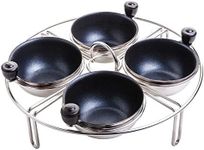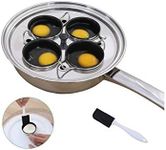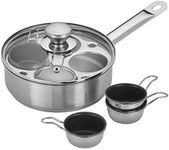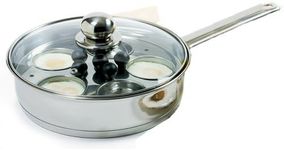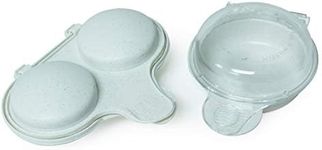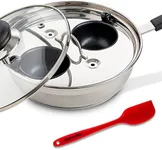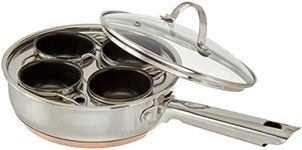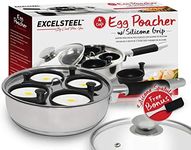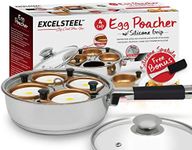Buying Guide for the Best Egg Poachers
Choosing the right egg poacher can make your breakfast routine easier and more enjoyable. Egg poachers come in various forms, from simple microwave cups to stovetop pans and electric machines. The best one for you depends on how many eggs you want to cook at once, your preferred cooking method, and how much space you have in your kitchen. Understanding the key features will help you pick a poacher that fits your needs and makes perfect eggs every time.CapacityCapacity refers to how many eggs the poacher can cook at once. This is important because it determines how many people you can serve in one go. Small poachers usually hold one or two eggs, which is great for individuals or couples. Medium-sized poachers can handle four to six eggs, making them suitable for small families. Larger poachers can cook even more eggs at once, ideal for bigger households or when entertaining guests. Think about how many eggs you typically need to prepare at a time and choose a poacher that matches your usual serving size.
Type (Microwave, Stovetop, Electric)The type of egg poacher refers to how it cooks the eggs. Microwave poachers are quick and convenient, perfect for those who want a fast breakfast with minimal cleanup. Stovetop poachers often come as pans with inserts and are good for those who prefer traditional cooking methods and want more control over the process. Electric poachers are plug-in devices that automate the process and can often cook several eggs at once, making them great for busy households. Consider your kitchen habits and how much time you want to spend cooking when choosing the type.
MaterialMaterial affects both the durability and the ease of cleaning of the egg poacher. Common materials include plastic, stainless steel, and nonstick-coated metal. Plastic poachers are lightweight and often microwave-safe, but may not last as long. Stainless steel is durable and often used in stovetop models, but may require more effort to clean. Nonstick coatings make it easier to remove eggs and clean up afterward, but the coating can wear off over time. Think about how often you’ll use the poacher and how much effort you want to put into cleaning when considering the material.
Ease of CleaningEase of cleaning is about how simple it is to wash the poacher after use. Some poachers are dishwasher-safe, which makes cleanup effortless, while others need to be washed by hand. Nonstick surfaces and simple designs usually make cleaning easier. If you want to save time and avoid scrubbing, look for a poacher that is easy to disassemble and clean, and check if it’s dishwasher-safe.
Size and StorageSize and storage refer to how much space the poacher takes up in your kitchen. Compact poachers are easy to store and ideal for small kitchens or people with limited cabinet space. Larger poachers or electric models may require more room on your countertop or in your cupboards. Consider how much space you have available and whether you want to keep the poacher out or store it away when not in use.
VersatilityVersatility means whether the poacher can be used for other types of cooking, such as steaming vegetables or making omelets. Some poachers come with extra trays or features that allow you to cook more than just eggs. If you like to experiment in the kitchen or want a multi-purpose tool, look for a poacher that offers additional cooking options.



